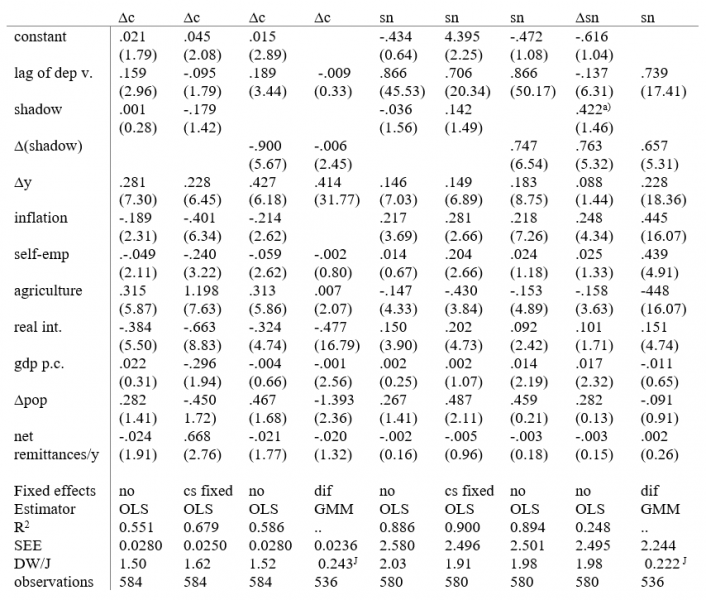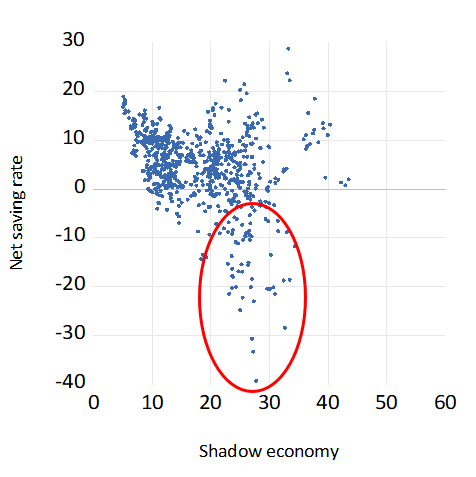References
Deaton, A. (1977), ‘Involuntary saving Through Unanticipated Inflation’, American Economic Review 67, 899–910.
ECE (2008) The non-observed economy in National Accounts: Survey of National Practices. United Nations Economic Commission for Europe, Geneva. https://unece.org/fileadmin/DAM/stats/publications/NOE2008.pdf
Gyomai, G. and P. van de Ven (2014) The Non-Observed Economy in the System of National Accounts. OECD Statistics Brief 18. http://www.oecd.org/sdd/na/Statistics%20Brief%2018.pdf
Medina, L. and F. Schneider (2019) Shedding Light on the Shadow Economy: A Global Database and the Interaction with the Official One. CESifo Working Paper No. 7981. https://ideas.repec.org/p/ces/ceswps/_7981.html
Oinonen, S. and M. Viren (2021) How does the shadow economy show up in National Accounts? Forthcoming in GUS Economic Review, Issue 2/2021.
Pissarides, C. and G. Weber (1989) An expenditure-based estimate of Britain’s black economy. Journal of Public Economics 39, 17-32.
Rocher, S. and M. Stierle (2015) Household saving rates in the EU: Why do they differ so much? Discussion Paper 005, September 2015. https://ec.europa.eu/info/sites/info/files/dp005_en.pdf
Schneider, F. and A. Buehn (2016) Estimating the Size of the Shadow Economy: Methods, Problems and Open Questions. IZA Discussion Paper 9820.
Takala, K. and M. Viren (2010) Is Cash Used Only in the Shadow Economy? International Economic Journal 24(4), 525-540.






